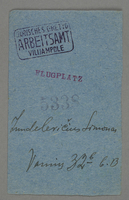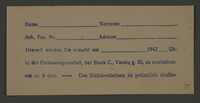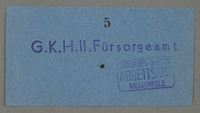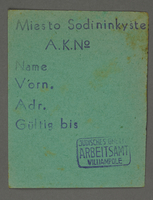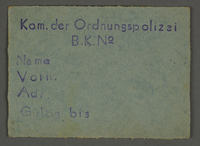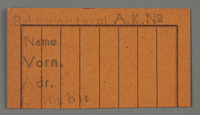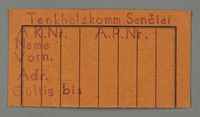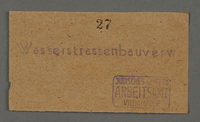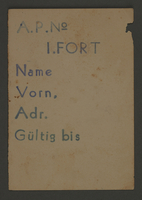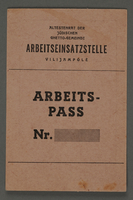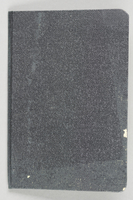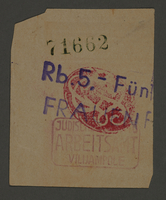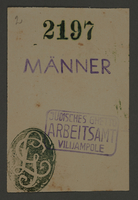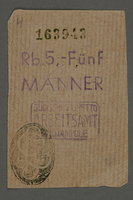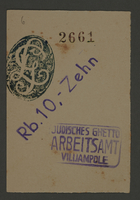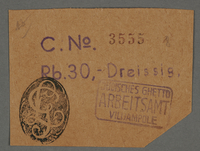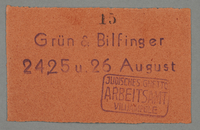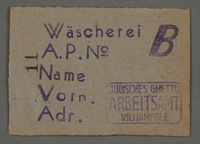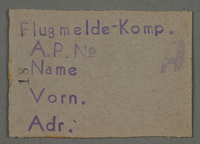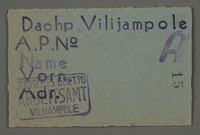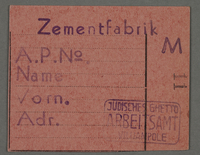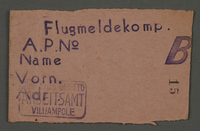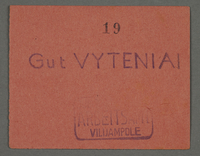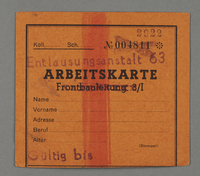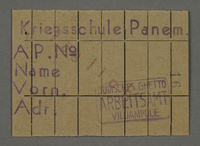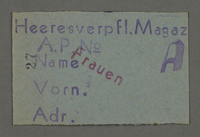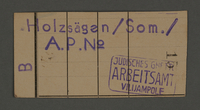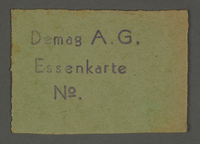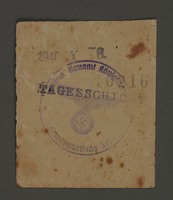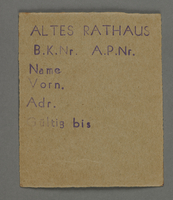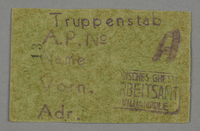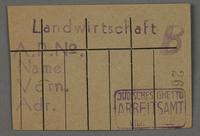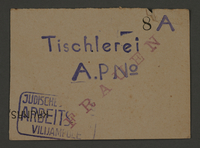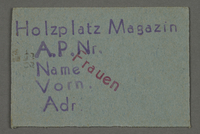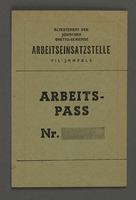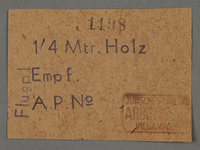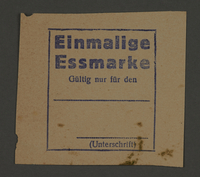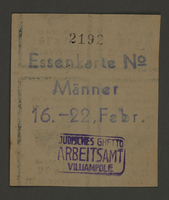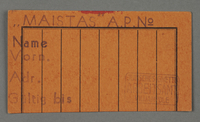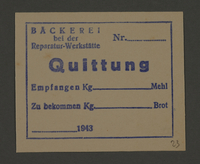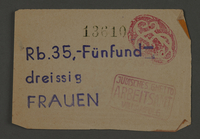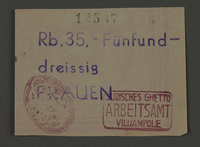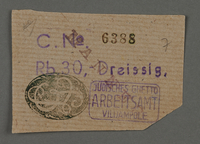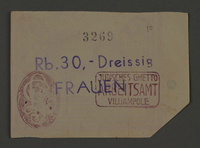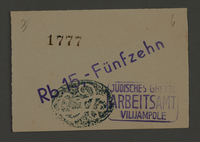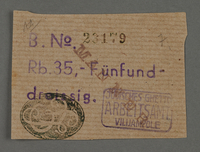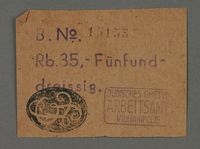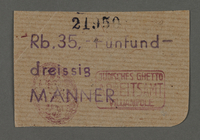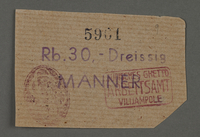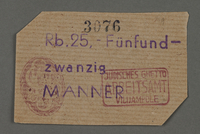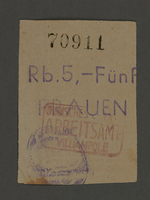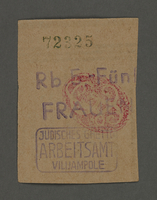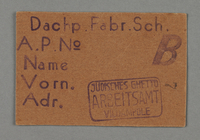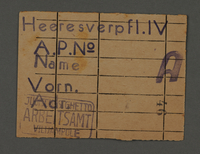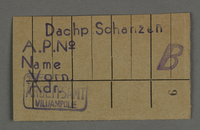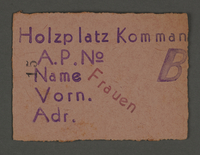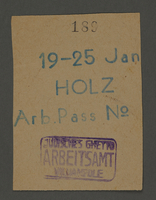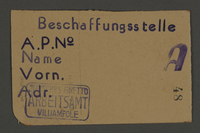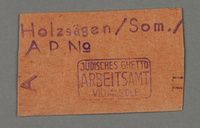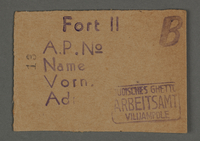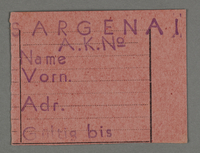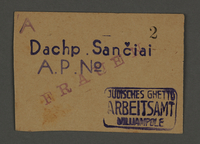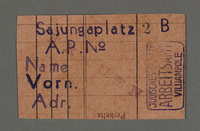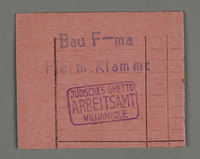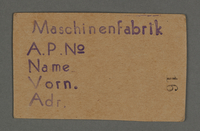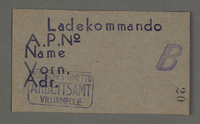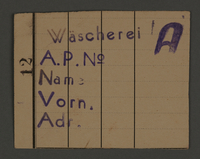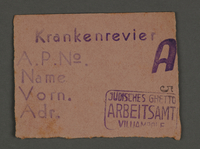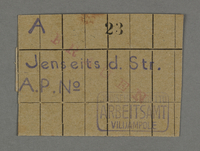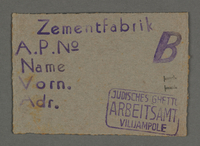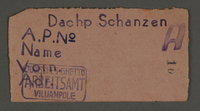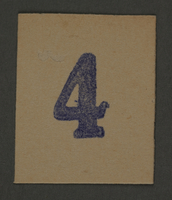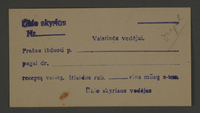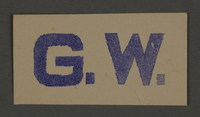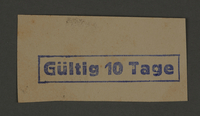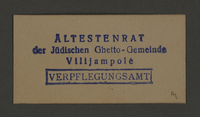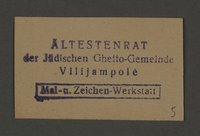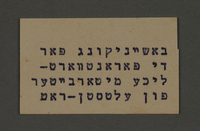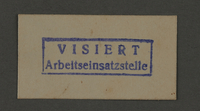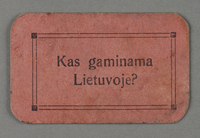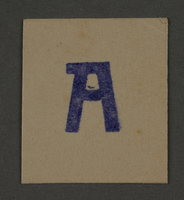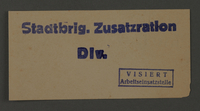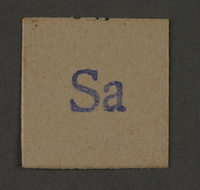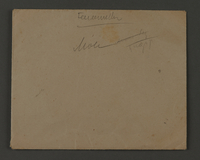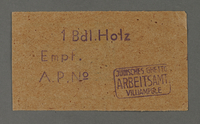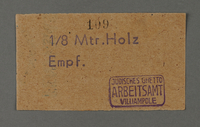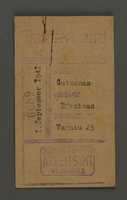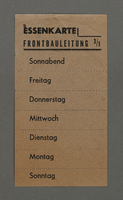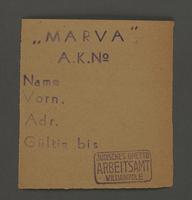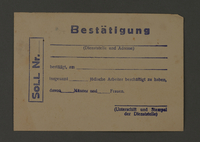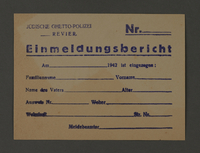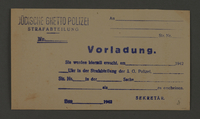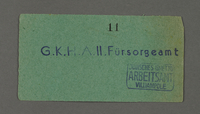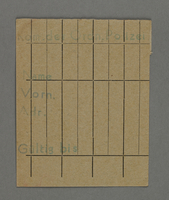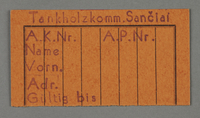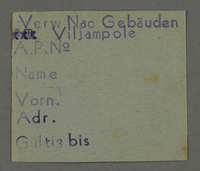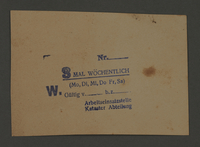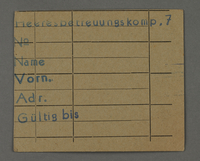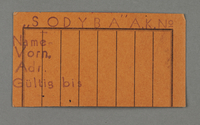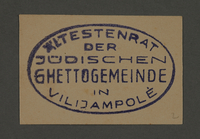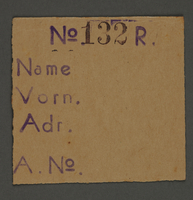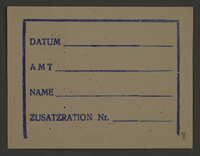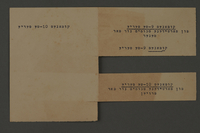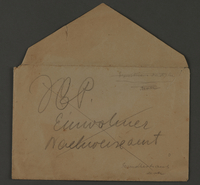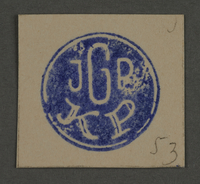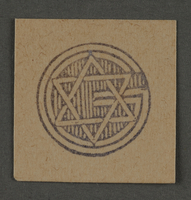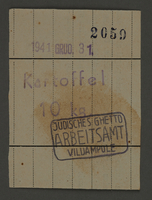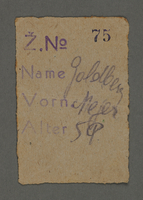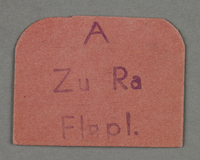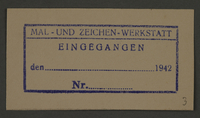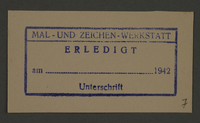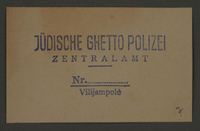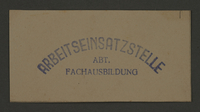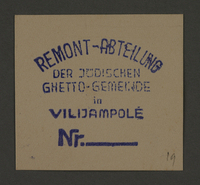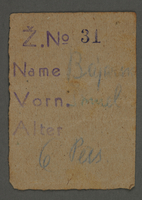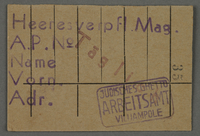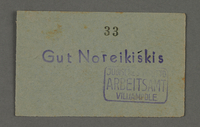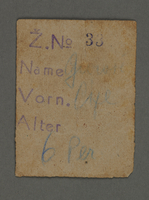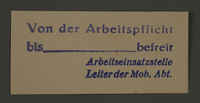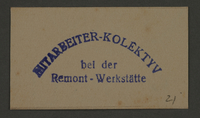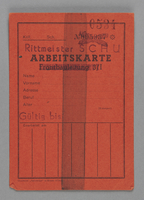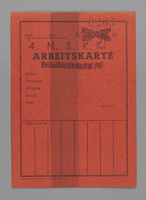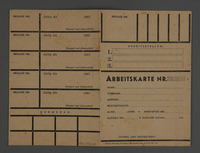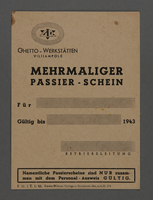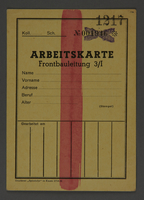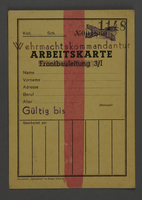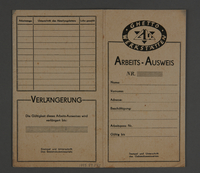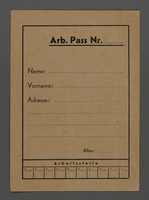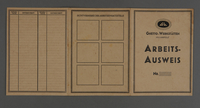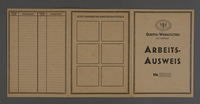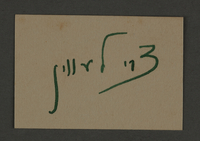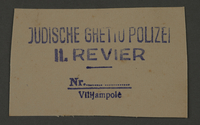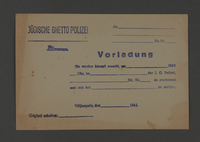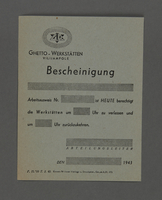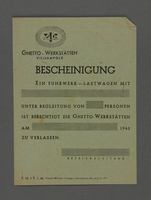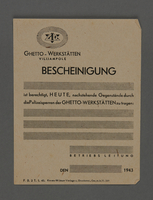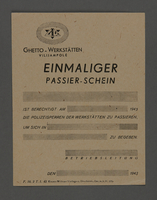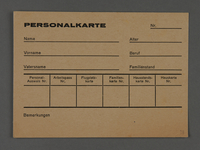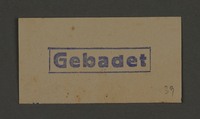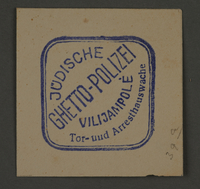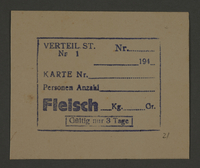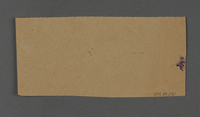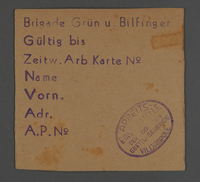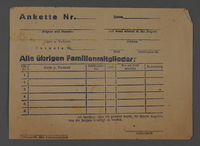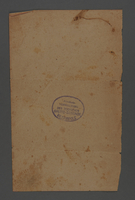Overview
- Date
-
creation:
1942
- Geography
-
creation:
Kovno ghetto (historic);
Kaunas (Lithuania)
- Credit Line
- United States Holocaust Memorial Museum Collection
- Signature
- Recto: lower right, "Esther Lurie/1942", in ink
- Contributor
-
Artist:
Esther Lurie
- Biography
-
Esther Lurie (1913-1998) was born in Liepaja (formerly Libau), Latvia, to a religious, intellectual Jewish family. Her parents were Josef and Bluma and she had five older sisters and an older brother. The family was forced to move to Riga during World War I (1914-1918), when Liepāja, a Baltic seaport which was then part of the Russian Empire, was taken over as a military port. Esther’s artistic gifts were nurtured from an early age. From 1931 -1934, she studied theatrical set design at the Instituts des Arts Decoratifs in Brussels, Belgium; in early 1934, she went to Antwerp, Belgium, to study drawing and painting at the Académie Royale des Beaux-Arts. Most of her family emigrated to Palestine in 1934 and Esther joined them there. She worked with the Hebrew Theater, producing set decorations, and by 1938, had her first one women art show, winning the Dizengoff Prize.
In 1939, Esther went on a study-exhibition tour throughout Europe. She was visiting her sister, Muta, in Kovno (Kaunus), Lithuania, when World War II broke out and she was trapped in the area. In 1940, the Soviet Army invaded and occupied Lithuania and the persecution of Jews became widespread. In June-July 1941, Germany invaded the Soviet Union and soon occupied Lithuania. Almost immediately, German Einsatzgruppe (mobile killing units) and their Lithuanian auxiliaries began systematic massacres of Jews throughout the country. By November 1941, the surviving Jews of Kovno were imprisoned in a sealed ghetto surrounded by barbed wire. It was extreme overcrowded and there weresevere food shortages and frequent outbreaks of disease.
Esther immediately began to record her experiences with sketches and written testimony on whatever little scraps of paper she could find. This was not easy and it could be dangerous – they were always under observation from guards. But other ghetto residents who saw her drawings thought it was important that someone should show ‘how it was’ and make a permanent record of their sufferings. Strangers would let her sketch the scenes from the windows of their rooms. When she was sent to do forced labor, the Judenrat [Jewish Council of Elders] made arrangements for her to be relieved, so that she could continue to record the life of the ghetto. As Esther noted later in her ife: “Pictures are both eye-witness documents and a memorial for the lost souls.”
As deportations from the ghettos to the concentration camps increased, Esther became concerned about the survival of her work. She asked the craftsmen in the pottery workshop to make her large jars in which she would hide her work. In the autumn of 1943, the ghetto was converted to the Kauen concentration camp. In July 1944, they began to liquidate the ghetto, deporting the remaining inhabitants and burning the buildings. At this time, Esther was separated from her sister, Muta Zarchin (Zarhin). Esther was deported to Stutthof concentration camp; Muta, age 35, her young son, and her family were sent to Auschwitz, where they were killed on arrival. In August 1944, Esther was sent to the Leibisch forced labor camp, where she continued to document the people and scenes of her daily life. She drew on scraps of paper backing from cotton rolls from the camp infirmary and hid the sketches in her clothing. Occasionally, she was able to barter a drawing for a piece of bread.
On January 21, 1945, the camp was liberated by the Soviet Army. She worked briefly as an interpreter for the Russians in Italy. Because she was a citizen of Palestine, a British protectorate, she was placed with a group of liberated British prisoners of war. She also met some Jewish soldiers from Palestine, including the artist, Menachem Shemi. They organized an exhibit of her sketches and published them as a booklet, Jewesses in Slavery: 15 drawing from a Labour Camp. In July, she was repatriated to Palestine and reunited with her family. She and her sisters participated in the Haganah, a defense organization active in the struggle for the establishment of the independent state of Israel. She married Joseph Shapiro and they had two children. She resumed her career as a professional artist, and, in 1946, was awarded her 2nd Dizengoff Prize. Some of her drawings of the Kovno ghetto were recovered by a friend, Avraham Golub Tory, who had been secretary to the Council of Elders, kept safe in the pottery jars in the secret, buried ghetto archives. Her artwork would be presented as evidence of the Holocaust during the Eichmann trial in Jerusalem in 1961. Lurie lived in Tel Aviv, Israel, until her death.
Physical Details
- Language
- Yiddish
- Classification
-
Art
- Category
-
Drawings
- Object Type
-
Portrait drawing (lcsh)
- Physical Description
- Black ink portrait; image of man.
- Dimensions
- overall: Height: 4.330 inches (10.998 cm) | Width: 3.540 inches (8.992 cm)
- Materials
- overall : paper, ink, graphite
- Inscription
- Verso: right side, (inscription in Hebrew letters), in pencil
Rights & Restrictions
- Conditions on Access
- No restrictions on access
- Conditions on Use
- No restrictions on use
Administrative Notes
- Legal Status
- Permanent Collection
- Provenance
- The drawing was acquired by the United States Holocaust Memorial Museum in 1995.
- Record last modified:
- 2023-05-22 12:31:03
- This page:
- https://collections.ushmm.org/search/catalog/irn10295
Download & Licensing
In-Person Research
- By Appointment
- Request 21 Days in Advance of Visit
- Plan a Research Visit
- Request to See This Object
Contact Us
Also in Kovno ghetto collection
The collection consists of artifacts, drawings, documents, and scrip relating to life in the Kovno (Kaunus) ghetto in Lithuania before and during the Holocaust.
Date: 1941
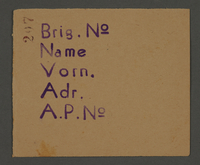
Pass from the Kovno ghetto
Object
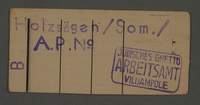
Pass from the Kovno ghetto
Object

Pass from the Kovno ghetto
Object
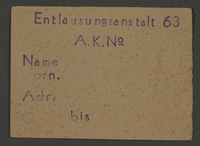
Pass from the Kovno ghetto
Object
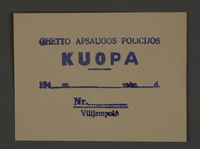
Permit
Object
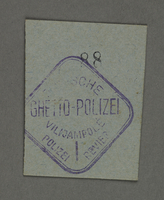
Ticket
Object
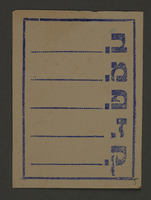
Permit from the Kovno ghetto
Object
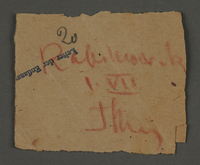
Notes
Object
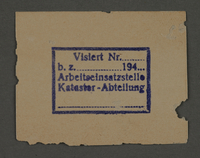
Permit
Object
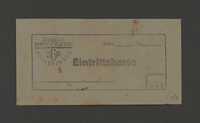
10252
Object

Pass from the Kovno ghetto
Object

